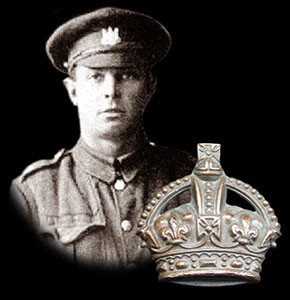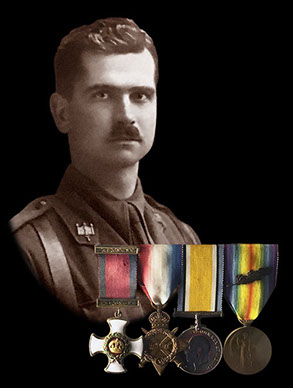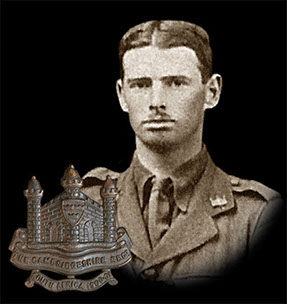
Who Were
The Cambs
The Cambs
at War
1/1st Btn 1914-1919
1914 - 1/1st Overview
1915 - 1/1st Overview
1915 - St Eloi
1915 - Fosse Wood
1916 - 1/1st Overview
1916 - The Schwaben
1916 - St Pierre Divion
1917 - 1/1st Overview
1917 - St Julien
Insignia, Medals & Books
Remembering The Cambs
Biographies
About Us &
This Site
The Meaulte Road Attack and Advancing East – 10th to 31st August 1918
In the days following the attack on Morlancourt, with the Allied offensive now in full swing, the Cambridgeshires moved into reserve and spent several days resting and refitting. On August 16th the Cambs returned to the positions around the village of Morlancourt and spent four days in the front line. Several large drafts of replacements reached the Battalion, bringing their number back up after the losses from earlier in the month. By the time the Cambs had finished their four days in the front, the plans for the next stage of the offensive in this area had been drawn up and Lt Col Saint DSO was informed of the role of his Battalion. The plan was for the 35th Brigade, including the Cambs, to push northeast, over the Bray – Meaulte Road, as part of a much wider push on Bapaume.
Late in the evening of August 21st the Cambridgeshires moved up in preparation for their nighttime journey to their assembly positions. The journey was complicated by a thick German gas bombardment, but the men were able to get into position in time. The plan of attack was for three Coys, A, B and C to lead the Cambridgeshires’ assault, with D Coy in reserve. As was so often the case for the Cambs during attacks, they were the flank of their division’s section, with the neighbouring 47th Division attacking to their right. Once the Cambridgeshires had taken the first objective line the 7th Nofolks would move through them and push the attack on to the second objective line.
In the hours before the attack, Lt Col Saint was informed that Brigadier Vincent, CO of the 35th Brigade, was unwell and he would now be needed to take Vincent’s place for several hours. Major Clayton, battalion second in command, rushed up to the Battalion HQ to take Saint’s place. As it happened, Brigadier Vincent quickly recovered from his attack of malaria related fever and Saint rejoined his Battalion shortly after the attack had begun. At 4.30am, as the men moved into their assembly positions, an increasing number of enemy artillery shells started crashing down around the Cambridgeshires’ positions. Undeterred by the enemy fire, at exactly 4.45am the British artillery commenced their intense bombardment of the German positions and the men advanced.
Under the cover of the thundering artillery bombardment and blanketed in smoke, mist and, in some places, German gas, the men moved forward, struggling at times to keep direction. Despite growing opposition from enemy machine guns hidden among the countless shell holes, the men slowly made the 2000-yard advance. The 12th Division’s advance was supposed to be supported by eight tanks, two of which were to advance with the Cambs. The poor visibility initially seriously impeded the effectiveness of the tanks, which only really became effective at silencing the enemy machine guns when they neared the first objective. Of the two tanks directly supporting the Cambs, one was delayed after mechanical trouble and the other, after moving too far to the left, became stuck for over an hour.
The initial lack of effective fire from the tank support had severe consequences on the advancing Cambridgeshires and casualties, especially in the first several hundred yards, were heavy. By 6.20am A and C Coys had made the 2000-yard advance and heavy fighting was raging along their sections of the objective line. However B Coy, on the right, was taking heavy machine gun fire from enemy positions in the neighbouring 47th Division area, and their advance had stalled several hundred yards before the objective line. Off to the right, the advance of the 141st Brigade, 47th Division, had halted against the strong German defences in Happy Valley. This left the German positions further back free to keep up their fire on the flank of the Cambridgeshires.
At this point, in a surreal scene that Clayton later described when writing the regimental history, part of two squadrons of Northumberland Hussars (Yeomanry), who were supporting the 47th Division, acting on inaccurate information, made a forlorn charge straight at the German defences holding up the Cambridgeshires’ right flank. Clayton remembered:
When they had gone about one thousand yards they topped a slight rise. There was a crescendo of machine gun fire, and down they went like a pack of cards: odd riderless and wounded horses were careering back, but the two squadrons had ceased to exist. That was the only cavalry charge I ever saw; I never want to see another.
Despite the arrival of several tanks the situation on the right remained the same. By late morning the 9th Essex passed through the Cambridgeshires, ready to push the advance on to the second objective line. However the German defences on the right were still too strong and this side of the Essex attack failed to reach the second objective line. In the early afternoon a fierce German counter attack on the 9th Essex positions caused them to pull back to the first objective line. This withdrawal by the Essex meant that the positions held by the Cambridgeshires, especially those on the right, were now the front line and, after some fierce fighting, they were able to stop the German counter attack.
By early evening the reserve brigade moved up and the situation between the 12th Division and 47th Division was stabilised. The Cambridgeshires remained in their positions along the Meaulte road for all of the following day. Finally in the early hours of August 24th they were relieved and moved back for a break. This pause gave the Battalion a chance to confirm casualties, rest and resupply. Casualties from the attack, while heavy, were not as catastrophic as first feared. The capture and subsequent defence of the captured ground cost the Battalion 40 officers and men killed and over 100 wounded.
Among the fallen was one of the most legendary figures in the Cambridgeshires; CSM Harry Betts, the gallant warrant officer from March who had been awarded the MC for his gallantry earlier in the month, had not been seen since early in the advance and was now confirmed among the dead. In keeping with his gallant actions at Morlancourt and on numerous earlier occasions, Betts had spotted a German machine gun and set off alone to flank it and silence it. He was killed by enemy fire moments later. Captain Warren, when later writing about the attack remembered:
That evening some of the supporting battalion on our left, West Surrey I believe, came and told me that they had just buried one of our Sergeant Majors “one with the Military Cross ribbon”. I knew in a moment that it was Betts who had been unlucky and I knew the battalion had lost one whom it would be hard, if not impossible, to replace.
Clayton, when writing the regimental history, noted:
He had only gone a few yards when he fell, and with him Cambridgeshire lost one of its bravest sons and the Battalion a devoted and fearless warrant-officer.
CSM Betts was not the only decorated Cambridgeshire to fall on August 22nd. The 40 killed include 6 Military Medal holders along with a DCM holder, Walter Bonnet, who was mortally wounded. These men, along with numerous other experienced men on the casualty list, were hard to replace, especially as each draft of replacements arriving from England included more and more inexperienced young men.
On August 25th, after just one day out of the line to rest, the Cambridgeshires moved up in support of the other two brigades of the 12th Division. The attacks had continued while the Cambs were out of the line and now word came through that the enemy was falling back and the Division was soon advancing in pursuit. Aware that the retreating Germans would be planning to use high ground to their defensive advantage, orders were given that the Cambridgeshires would push on to the top of the Fricourt Ridge, northwest of Maricourt. Advancing in platoons, under the cover of Lewis guns, the men made good progress despite the ever-increasing enemy fire. By late afternoon they were 100 yards short of the summit and dug in for the night.
The following afternoon, with pressure mounting from attacks elsewhere on the line, the German’s pulled back from their positions on the Fricourt Ridge. The Cambridgeshires quickly occupied the positions along the crest and, on the morning of August 26th, the pursuit of the withdrawing enemy began again. The Cambs advanced over open ground and by the end of the day had taken their objective line along the Mariecourt – La Briqueterie road. Ahead of these new positions loomed the Maltz Horn Ridge, a long chalk slope that dominated the surrounding ground. Predictably the Germans were positioned along the summit, looking down with textbook fields of fire for their machine guns.
The pace of the last few weeks and the steady stream of losses was starting to take a toll on the Battalion, in order to keep functioning efficiently A and B Coys were temporarily combined until further drafts of officers and men arrived. Throughout the night, with the shell craters in chalk slope ominously glowing in the moonlight, the men readied for their pre-dawn attack. With the speed of the recent advances, there was no time to construct quality dugouts for the Battalion HQ, so it was a matter of adapting whatever could be found in the area. On this occasion Battalion HQ occupied several crude German shelters that were found in the middle of the nearby brickyard. These simply consisted of several large pits, around eight foot deep, with corrugated tin as a roof.
The location of Battalion HQ was far from ideal, a point raised by several officers, however it was one of the only suitable locations in the area and there was no time to make other arrangements – sadly this was to later have tragic consequences for the Cambs. At exactly 4.50am on August 28th, the bombardment started and the Cambs advanced. The German artillery responded and all along the ridge German machine guns blazed away. Luckily for the Cambs, in a detailed later noted by one of the officers present, it was still dark and the enemy was using large amounts of tracer ammunition. This enabled the Cambs to take cover when each gun swept a stream of tracer across the ground around them.
The Cambridgeshires, moving in short dashes, made their way up the slope and soon were rushing the trenches and gun pits along the summit. The fighting to clear the position was brutal and many of the enemy gunners died behind their guns. Those that did try to retreat were left with over 1500 yards of open ground to cross – few made it, especially when their own machine guns were turned on them by the Cambs.
For the rest of the day the Cambridgeshires consolidated their positions and by early evening orders came through that they were to be relieved by the Norfolks. It was at this moment that disaster struck and an enemy artillery shell scored a direct hit on the Cambs’ Battalion HQ. The corrugated tin roof provided no cover and the shell exploded in the middle of the pit, killing or wounded the occupants. Lt Col Saint DSO was mortally wounded having lost most of one arm and shoulder. The Battalion Signalling Officer, Capt Harry Driver MC, was killed instantly and numerous others were also killed or wounded.
Writing about the day’s fighting and the unfortunate events, Captain “Chick” Warren later noted:
Then came a happening, which later on in the day was to have deplorable consequences. Over the ridge in front galloped two teams of horses with light field guns, unlimbered, left the two guns in the open in full view of us and galloped back to cover. I got a machine gun on to them at once but the range was 1500 yards and it was not much use. In a very few minutes they were firing at us and they hit the parapet of the trench constantly. I fired belt after belt at the guns, ducking back into the trench each time there were two little white puffs of smoke, then a second or two later – whizz – whizz – only about half of them exploded and the trajectory of the shells was so flat that they ricocheted with a terrific noise into the air after just touching the parapet on the very top of the hill.
I sent a message back at once to B.H.Q. giving them the exact position but for some reason or other our artillery did not fire a shot at them all day. All we could do was to try and pepper the parties bringing up shells to them over the ridge.
He later continued:
It was one of these guns that dropped a shell right on top of B.H.Q. and mortally wounded Colonel Saint.
The loss of Saint and Driver was a devastating blow to all ranks of the Cambridgeshires. As a commanding officer, Saint, had always cared about the men under his command, even if at times he had worked them hard. Major Clayton DSO, battalion second in command, was promoted to Lt Col and given command of the Battalion. With only a few short hours of rest, the afternoon of August 29th saw the Cambridgeshires returning to the positions along the ridge, while the 37th Brigade attacked to the south.
Early in the morning of August 30th, the 47th Division moved through the positions held by the 12th Division and the weary Cambridgeshires were given time to rest and refit. The month of August had certainly been an intense and testing time for all ranks, however the enemy now was very much on the back foot and the advance would continue. All officers and men of the Battalion knew that after a few days rest they would be back in the line ready for the next attack.

35th Brigade's commanding officer Brigadier Sir Berkeley Vincent KBE CB CMG .

Capt 'Chick' Warren, from Wilburton.

CSM Betts MC DCM*, KiA on August 22nd.

Walter Bonnet DCM, DoW August 31st, after having been wounded on August 22nd.

Lt Col Saint DSO, DoW after Btn HQ was hit.

Lt Col Clayton DSO, given command of the Cambs after Lt Col Saint DSO was killed.

This site went live on the 14th February 2015 to mark 100 years since the 1/1st Cambs went off to war.
WE WILL REMEMBER THEM
Email us: cambsregt@gmail.com
Copyright 2015, 2016, 2017, 2018, 2019 by Felix Jackson. The information and images on this site should not be reproduced without prior permission.